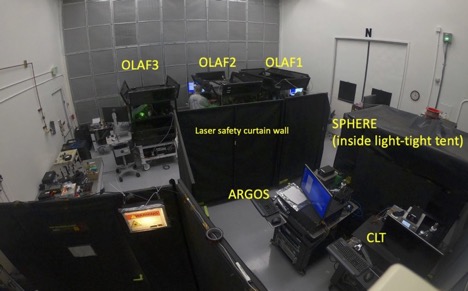
The GLAMR system can cover wavelengths between 310 and 2500nm with a radiometric range of about five decades. Wavelength sampling has varied based on the instrument requirements. The Landsat-9 OLI spectral range was sampled at 1 or 2nm steps for the wavelengths within a spectral channel and 5 or 10nm steps for wavelengths outside of the bands. The OCI instrument measurements were generally acquired at 1nm sampling, with narrow spectral regions acquired at 0.2nm. OCI took advantage of the radiometric range of GLAMR to characterize linearity over its dynamic range.
The figures below show the spectral and radiometric data provided to instrument teams for the characterization of the relative spectral response and absolute calibration. The GLAMR signal is generally stable to better than 0.1% radiometrically and 0.3nm spectrally.
The Landsat-9 OLI data sheet can be downloaded here: Landsat-9 OLI spreadsheet. The OCI data are still under review, pending final absolute calibration results from GLAMR, so only the plot is provided here.
The past performance summary for JPSS-2 VIIRS can be found on the JPSS-2 VIIRS Performance page.
Data spreadsheet can be downloaded here: OLI2_GLAMR_Scans
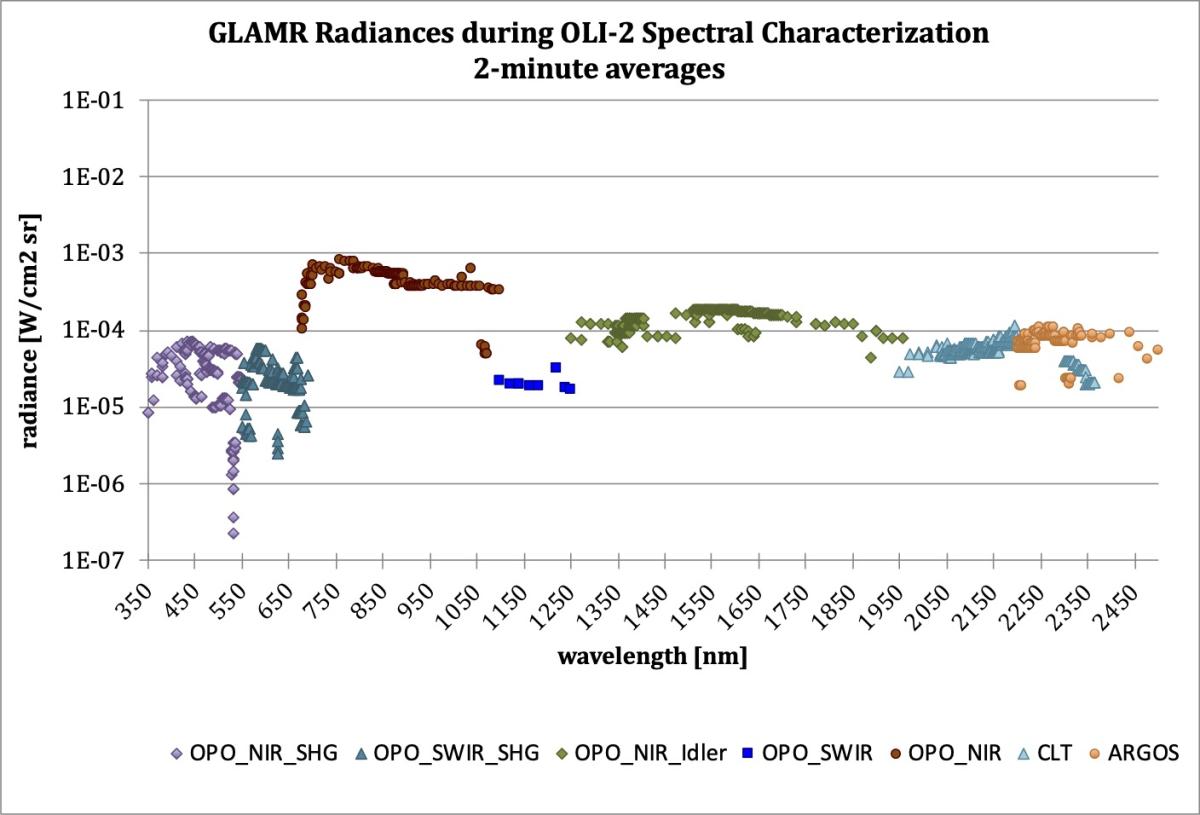

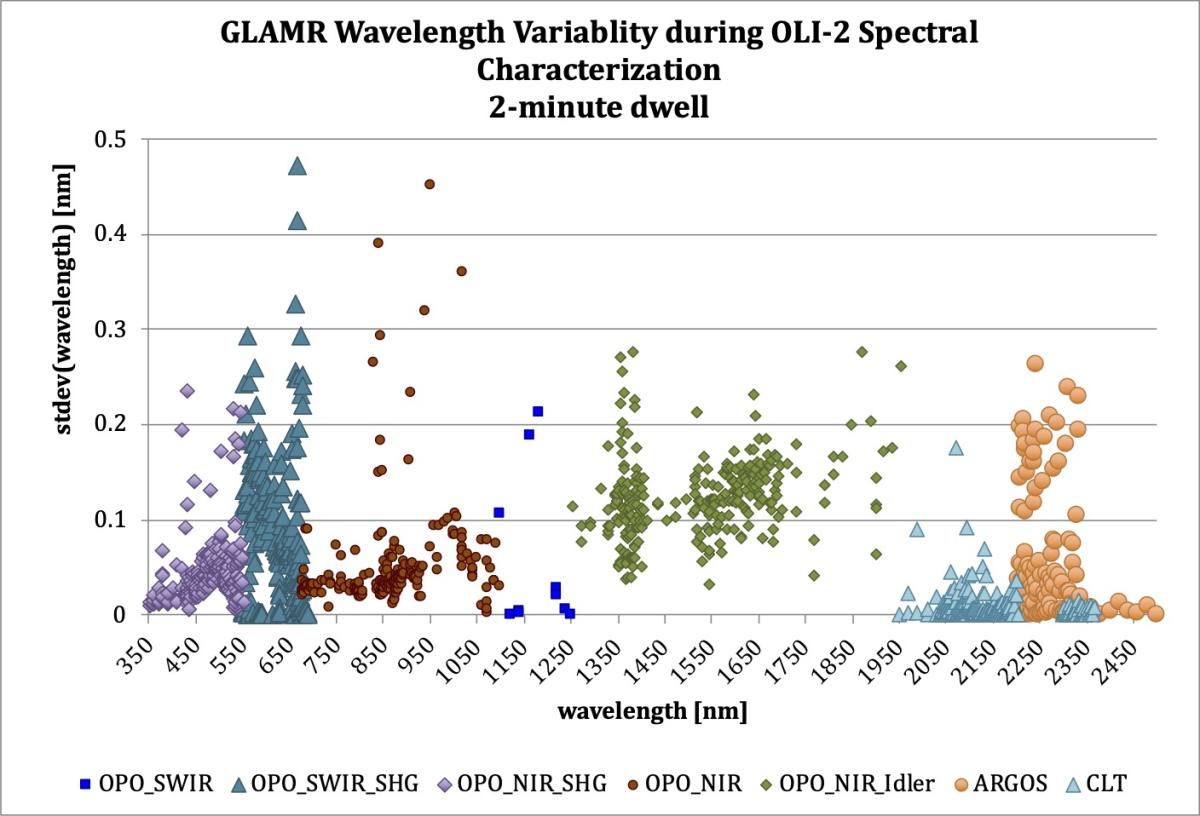
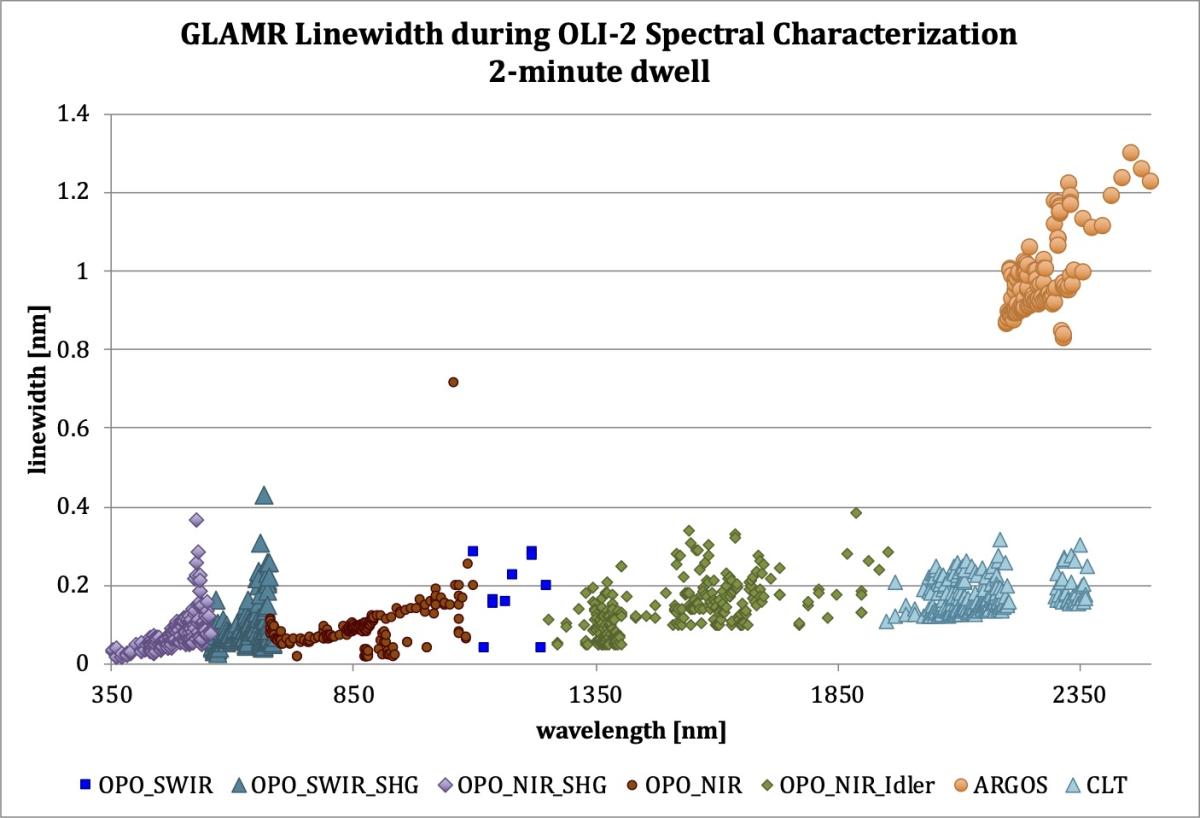
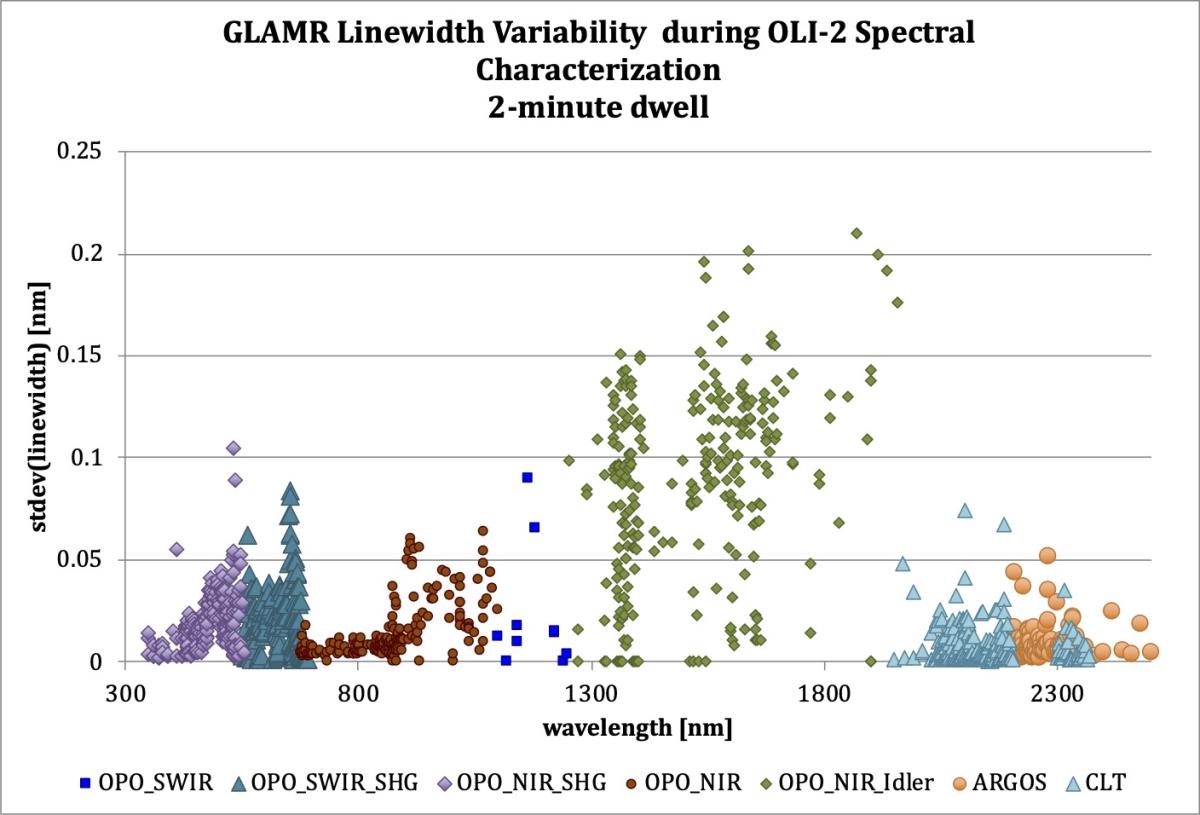

GLAMR radiances generated for the characterization and calibration of OCI.

